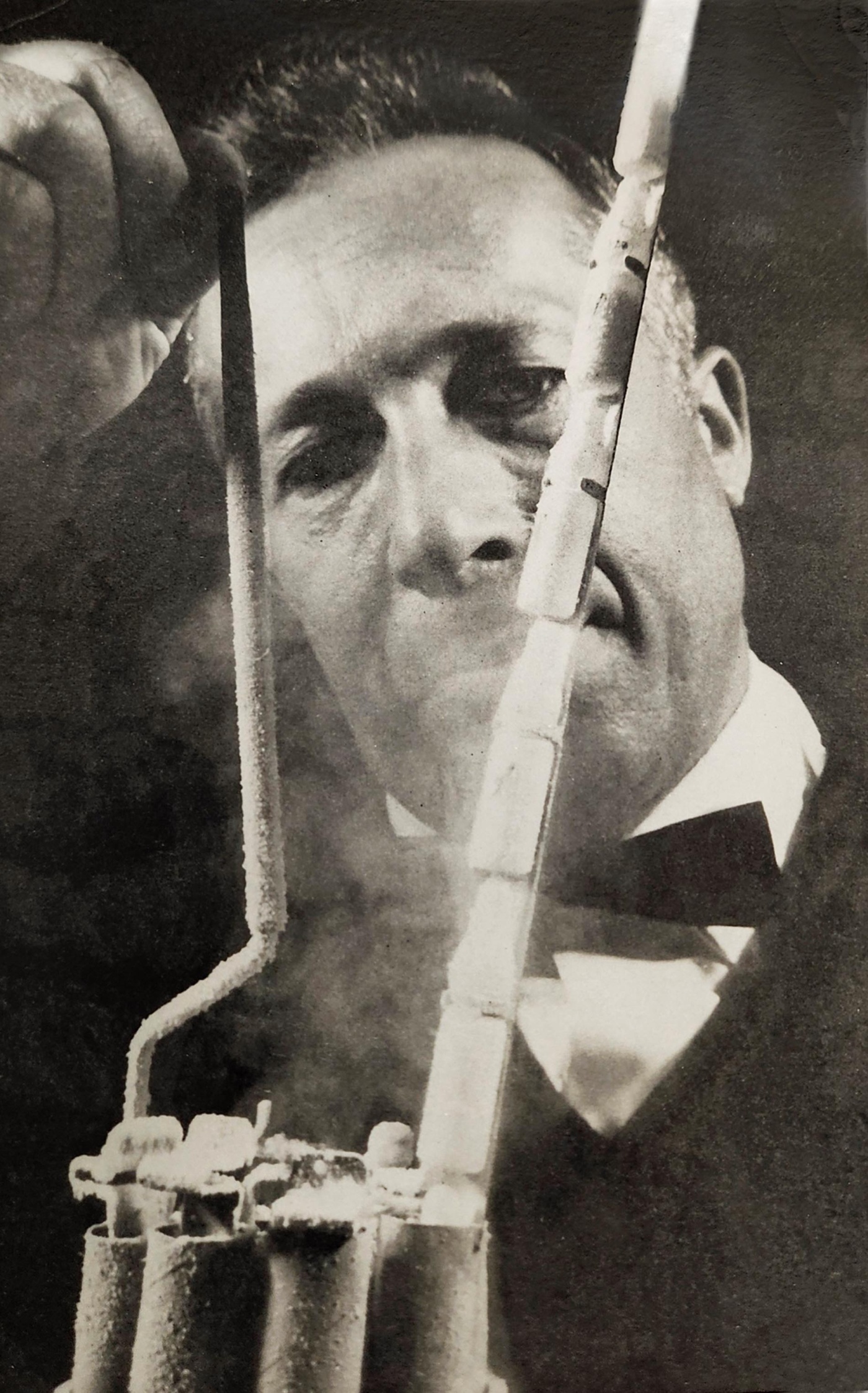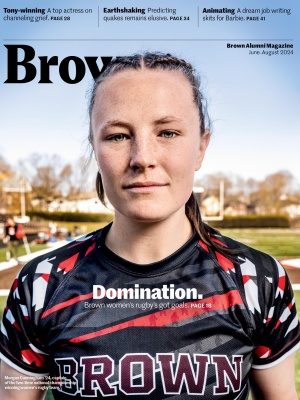Father of Sperm Banking
Jerome K. Sherman ’47 developed the technique that helped make the artificial insemination industry boom decades later.
In 1953, Jerome K. Sherman ’47 was getting his PhD in zoology at the University of Iowa when the university’s $2,700 Cryovac machine, for freezing living tissue for research purposes, broke. Sherman, then 27, told his department head he could build a new one for only $500.
And he did. But that’s not all. At the time, the only way to artificially inseminate a woman was to transfer the semen to her as soon as possible after it was ejaculated, because semen died within hours. The idea of freezing sperm had existed since the mid-19th century, but no one had gotten it to work in humans. Young Sherman, mulling on how to overcome that logistical barrier, concentrated sperm from his own semen via a centrifuge, added glycerol to protect the sperm, a 1959 innovation, then added his own tweak, which was to cool it more slowly. It worked: Three women became pregnant using it.

His thought, at the time was “Maybe...you could...have semen available for marriage in case something happens to the male,” he told the Arkansas
Democrat-Gazette in 2013.
Even though the process would not catch on widely until the 1970s, Sherman’s aha moment has since allowed countless couples worldwide to start a family. The breakthrough was “a matter of personal pride but, more importantly...appreciation for the opportunities I had to be able to do something like that in my lifetime,” he told the podcast Biohacked just a few years ago.
His discovery led to the opening, shortly after, of the very first sperm bank, at the University of Iowa, then, a few years later, another at the University of Arkansas Medical School (UAMS), where Sherman ended up teaching for 35 years and raising a family in Little Rock with his wife, the German-born Hildegard.
Sherman came to be known as one of the principal creators of the modern global assisted baby-making industry. “He was the first to figure out a way to freeze the sperm and to retain its reproductive ability,” a colleague said of him in the 2013 Democrat-Gazette story.
That’s why decades of his students at UAMS affectionately called him Spermin’ Sherman. He died December 1, 2023, at age 98, having outlived his wife and most of his colleagues. According to his son, Marc—one of his three surviving children—he was perfectly healthy until only shortly before his death: “We were aiming for him to reach 100, but I told him it was okay to go.”
Sherman was born working-class in Brooklyn in 1925, finished high school at 16 and then dropped out of Brooklyn College to join the Navy once the U.S. entered WWII. After serving as an anti-submarine warfare officer in the Pacific—and witnessing firsthand the devastating aftermath of the U.S. atomic bomb’s drop in Nagasaki, which he once called “the most significant experience of my life”—he graduated with a biology degree in 1947 from Brown, where he had gone to officers school.
He then earned a master’s degree at Case Western Reserve before landing at the University of Iowa, where he made his breakthrough. After he did so, he consulted faith leaders to discuss its moral implications. He said that a Protestant minister and a rabbi had no issue with it, but Catholic priests vehemently opposed it, seeing it as interfering with God’s work. Once news of the development broke out, creating public shock waves, people wrote to the Iowa governor to complain that it was being done at the state university. One Iowa state lawmaker called the process Sherman had invented “a pagan device.”
But the proliferation of the approach ultimately prevailed, with Sherman receiving lucrative job offers from several elite universities, including Harvard. Instead, he and Hildegard chose UAMS because they liked the mild weather, natural beauty, and abundance of places to take their kids fishing—a lifelong passion of his.
In 1964, he was one of the founders of the Society for Cryobiology. He also played a role in founding the American Association of Tissue Banks, helping to write their regulations for the processing and management of frozen sperm inventories. In 1991, he wrote the first guidelines for the cryobanking of human embryos for the association. He also spent decades consulting with countless animal and human sperm banks.
As a professor, he is remembered by former students as approachable, supportive, and funny, even a bit goofy. “He once told a story about having a mouse in his pocket and taking it into a bar and giving it a drink, and as he told the story, his speech became slurred like he was becoming inebriated,” remembers Jennifer Dillaha, director of the Arkansas Department of Health, who studied under Sherman in the early 1990s.
According to Marc, Sherman’s son, his father’s invention was later used by other doctors to freeze human organs for breakthrough medicine. “He did a lot of talks worldwide, most having to do with cryobanking. In Munich, they called him the pope of cryobanking.”
Marc remembers his father showing him, as a child, an electron microscope, the first in Arkansas. “I could see the sperm he was working on,” he recalls. It became a family tradition: “My niece said they looked like tadpoles.”
But, says Marc, his father was prouder of the fact that, in his years at UAMS, he taught roughly 5,000 students than he was of his big discovery. Additionally, his strong feelings about making the UAMS student body more reflective, racially, of Arkansas’s actual population led to the establishment of an Office of Minority Affairs with the school.
“He was a great role model, very caring and giving,” says Marc. “At our synagogue, he created a committee to welcome new people to town.” It was an unsurprising gesture for a man who, while at the University of Iowa, would organize bus trips for male students to get haircuts in Cedar Rapids— to protest the refusal of the barber near campus to cut Black students’ hair.
He visited hospitalized cancer patients from abroad receiving treatment at the Myeloma Institute for Research and Therapy in Little Rock, helping patients and their families feel more comfortable during their stay by speaking to them in their native language (he spoke French, German, and Spanish).
And his work with the Boy Scouts led to the creation of a camp held at UAMS for minority, special needs, and financially disadvantaged young people who were interested in medical careers that became a model for future programs administered by the Office of Minority Affairs.“I want to be remembered as a contributor to human welfare,” he told the Democrat-Gazette in 2013. He more than succeeded.
Sherman is survived by a daughter, two sons, six grandchildren, and two great-grandchildren. (Hildegard died in 2015.)





